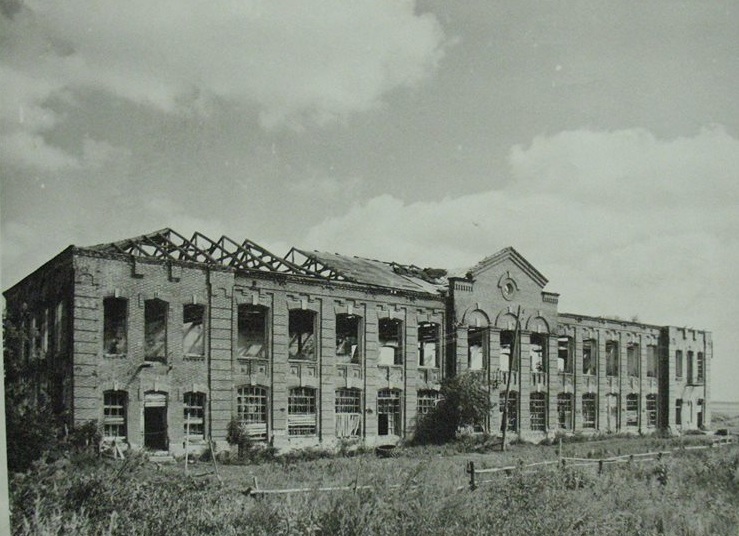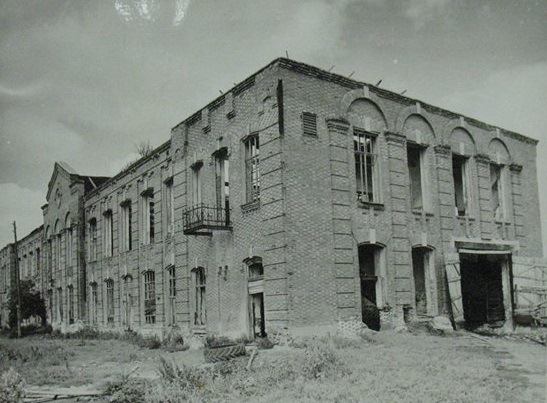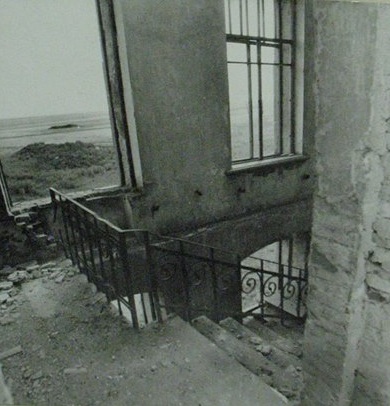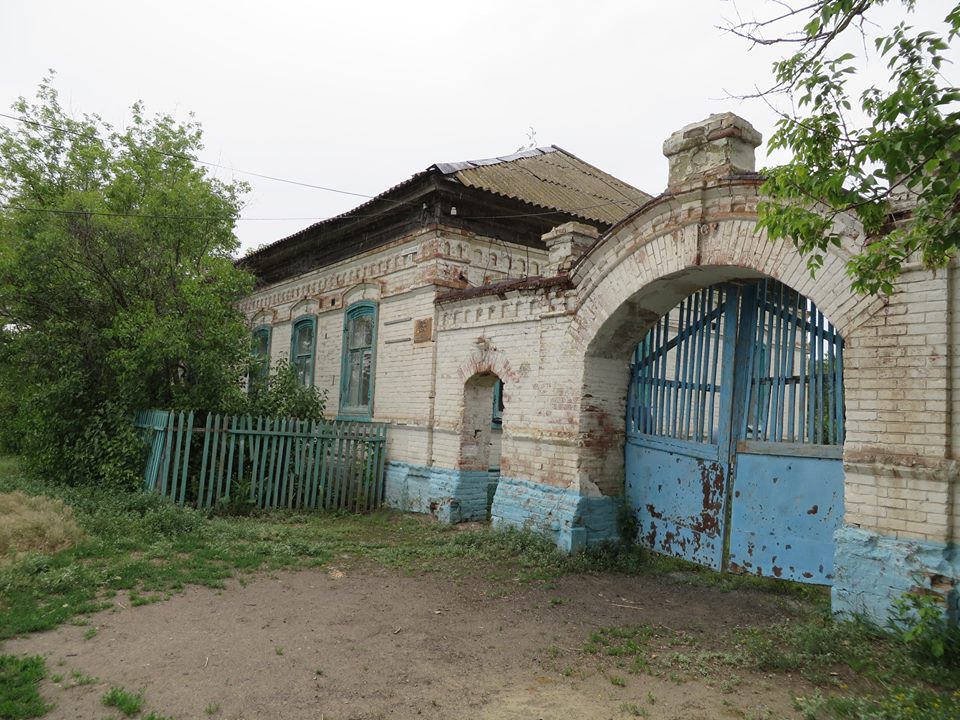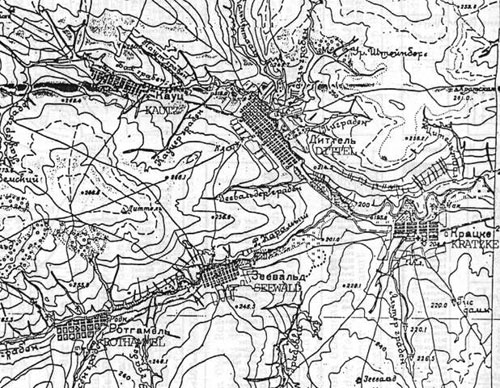Kratzke was founded in 1767 as a Lutheran colony. It was assigned to the parish headquartered in nearby Dietel , which was also the residence of the pastor. The Dietel parish also included the colonies of Merkel , Kautz , and Bauer . Bauer, a predominently Reformed colony, split with the Dietel parish in 1804 to join with the Reformed parish whose headquarters were located in the colony of Grimm .
In 1904 two additional colonies were added to the Dietel parish: the predominantly Lutheran colony of Neu-Dönhof and the predominantly Reformed colony of Neu-Balzer . The addition of these two colonies brought the total membership in the Dietel parish to 15,667 with 2,233 of those belonging to the Kratzke church. The 1906-1907 confirmation class numbered 128.
The first known church building to be constructed in Kratzke was dedicated in 1826. It was a wooden building with a wooden roof. A new church, also constructed of wood, was built in 1899. For this construction, the colony received a loan of 3,000 rubles.
During the Soviet years, the steeple was dismantled, the original windows replaced, and the building was converted into a community center where movies were shown. The building still stands, though in poor repair, and is being used as a barn for the storage of hay.
According to historian Gottlieb Beratz , a Volga German historian, the first group of German colonists arrived in Kratzke on 7 August 1767. The first 34 colonist families came from the Palatinate, Prussia, Hanover, and Sweden. This colony was one of those founded by Baron de Boffe. It was named after Adam Kratzke, the leader of the original colonist group who settled there. He later moved to Katharinenstadt .
The first statistical report on Kratzke was made by Count Orlov to Empress Catherine II on 14 February 1769. It outlines that there were a total of 127 inhabitants (67 men and boys and 60 women and girls) in Kratzke comprising 34 families. These families had a total of 47 hourses, 13 work oxen, 69 cows & calves, and 6 pigs among them. There were a total of 48 houses in the colony at the time.
There was a school in Kratzke from the earliest days. The 1798 Census indicates that the schoolmaster was Nikolaus Rupp (age 41) who was originally from Huck , but who had been living in Balzer before moving to Kratzke. By 1904 there were 200 students. The school fee was 5 kopek per student. The teacher in Kratzke received 450 rubles for his efforts in Kratzke during that same year.
In August 1774, colony of Kratzke was raded by the notorious rebel leader Pugachev and his followers. Gottlieb Beratz reports the following:
Soon after his arrival in the colony, Pugachev erected gallows and strung up four strangers thereon. Thereupon these monsters, reported the witness Dewald, ransacked the few houses of our then still very small village, took what pleased them, struck old men and women, as well as children, with their whips and rods, but without killing anyone, and then camped near the village. Before dawn was visible on the horizon, a few houses in the village here and there began to burn. At the same time the whole pack of brigands with their leaders got up and left our village. As there was no wind that morning, the fire did not spread and even in the farmyards where it had broken out, much could still be saved. All the grain, hay,and straw on the threshing floors, however, fell prey to the flames. Also, everything that the robbers came across in the fields was completely destroyed. The livestock that they could catch also was partly butchered on the spot, partly driven away with them.
On 11 October 1798, a Mr. Sixtel completed a report on the condition of the Kratzke colony and its inhabitants. This report was made to the Office of Immigrant Oversight which at the time was responsible for monitoring the progress of the German colonies. This report indicates that there were a total of 210 people in the colony making up 39 households. There were 112 men & boys and 98 women & girls. All the families were Lutheran with the exception of two which were of the Reformed faith. There was a school teacher and a separate building which functioned as a school house. The congregation was currently without a pastor as he had moved to the parish of Katharinenstadt .
All of the families were engaged in farming. There was one who had skills as a dyer and two who were also shoemakers in the colonies. The colonists are noted as being diligent workers. The houses in the colony were ramshackle in condition with wattle and daub fences surrounding their yards. There was a mill located along the Karamysh Brook which ran along the northern edge of the colony. The report further indicates that there had been trouble with gophers distroying the crops during the summer of 1798, and that the colonists did not have an effective means with which to combat them. Many of the colonies had public granaries, but the report indicates that Kratzke did not have such a facility because it lacked the forested land from which lumber could be cut to build a granary.
In 1855, families from Kratzke, along with several from the neighboring colonies of Dietel , Kautz , and Merkel founded the daughter colony of Ährenfeld .
Volga German political leader and historian, Jakob Dietz , was from Kratzke.
| Year |
Households
|
Population
|
||
|---|---|---|---|---|
|
Total
|
Male
|
Female
|
||
| 1767 |
|
129
|
|
|
| 1769 |
34
|
127
|
67
|
60
|
| 1773 |
34
|
137
|
76
|
61
|
| 1788 |
22
|
166
|
88
|
78
|
| 1798 |
30
|
213
|
117
|
96
|
| 1816 |
53
|
339
|
181
|
158
|
| 1834 |
79
|
663
|
341
|
322
|
| 1850 |
82
|
1,012
|
535
|
477
|
| 1857 |
119
|
1,214
|
637
|
577
|
| 1859 |
81
|
1,223
|
639
|
584
|
| 1886* |
138
|
1,213
|
673
|
576
|
| 1891 |
133
|
1,907
|
980
|
927
|
| 1894 |
131
|
1,928
|
1,020
|
908
|
| 1897 |
|
1,181**
|
588
|
593
|
| 1904 |
|
2,233
|
|
|
| 1910 |
|
2,458
|
|
|
| 1912 |
|
2,497
|
|
|
| 1920 |
224***
|
1,577
|
|
|
| 1922 |
|
1,322
|
|
|
| 1926 |
235
|
1,456
|
712
|
744
|
| 1931 |
|
2,171****
|
|
|
| 1939 |
|
2,188
|
|
|
*Not including 84 families (345 men and 326 women) who are absent having immigrated to the United States.
**Of whom 1,175 were German.
***Of which 223 households were German.
****Of whom 2,149 were German.
Lutheran.
Beratz, Gottieb. The German colonies on the Lower Volga, their origin and early development: a memorial for the 150th anniversary of the arrival of the first German settlers on the Volga, 29 June 1764 . Translated by Adam Giesinger (Lincoln, NE: American Historical Society of Germans from Russia, 1991): 351.
Diesendorf, V.F. Die Deutschen Russlands : Siedlungen und Siedlungsgebiete : Lexicon. Moscow, 2006.
Giesinger, Adam. From Catherine to Khrushchev: The Story of Russia's Germans . Lincoln, NE: American Historical Society of Germans from Russia, 1981.
Mai, Brent Alan, ed. A Description of the Saratov Colony of Pochinnaya [Kratzke] 1798 . Lincoln, NE: American Historical Society of Germans from Russia, 1995.
Orlov, Gregorii. Report of Conditions of Settlements on the Volga to Catherine II , 14 February 1769.
Pallas, P.S. Reise durch verschiedene Provinzen des Russischen Reichs. Theil 3,2, Reise aus Sibirien zurueck an die Wolga im 1773sten Jahr (St. Petersburg: Kaiserl. Academie der Wissenschaften, 1776): 622.
Pleve, Igor. Einwanderung in das Wolgagebiet, 1764-1767 Band 2 (Göttingen: Göttinger Arbeitskreis, 2001): 449-461.
Preliminary Results of the Soviet Census of 1926 on the Volga German Autonomous Soviet Socialist Republic (Pokrovsk, 1927): 28-83.
Rye, Richard, trans. Description of the Saratov Colony of Katharinenstadt also known as Baronsk . Lincoln, NE: American Historical Society of Germans from Russia, 1995.
"Settlements in the 1897 Census." Journal of the American Historical Society of Germans from Russia (Winter, 1990): 19.
- Williams, Hattie Plum. The Czars Germans: With Particular Reference to the Volga Germans . Lincoln, NE: American Historical Society of Germans from Russia, 1975.
Kratzke (wolgadeutsche.net) - in Russian
Kratzke Site (Bob Berschauer)
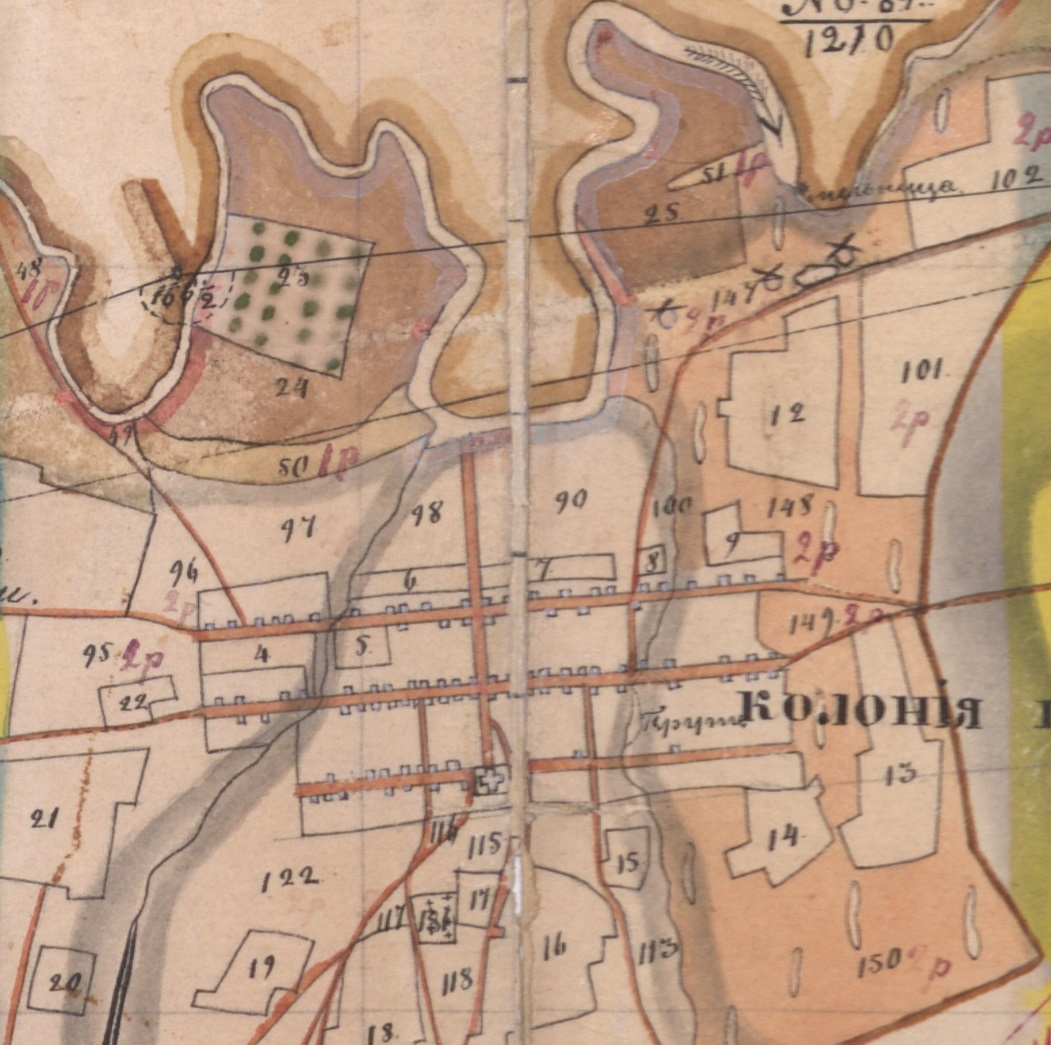
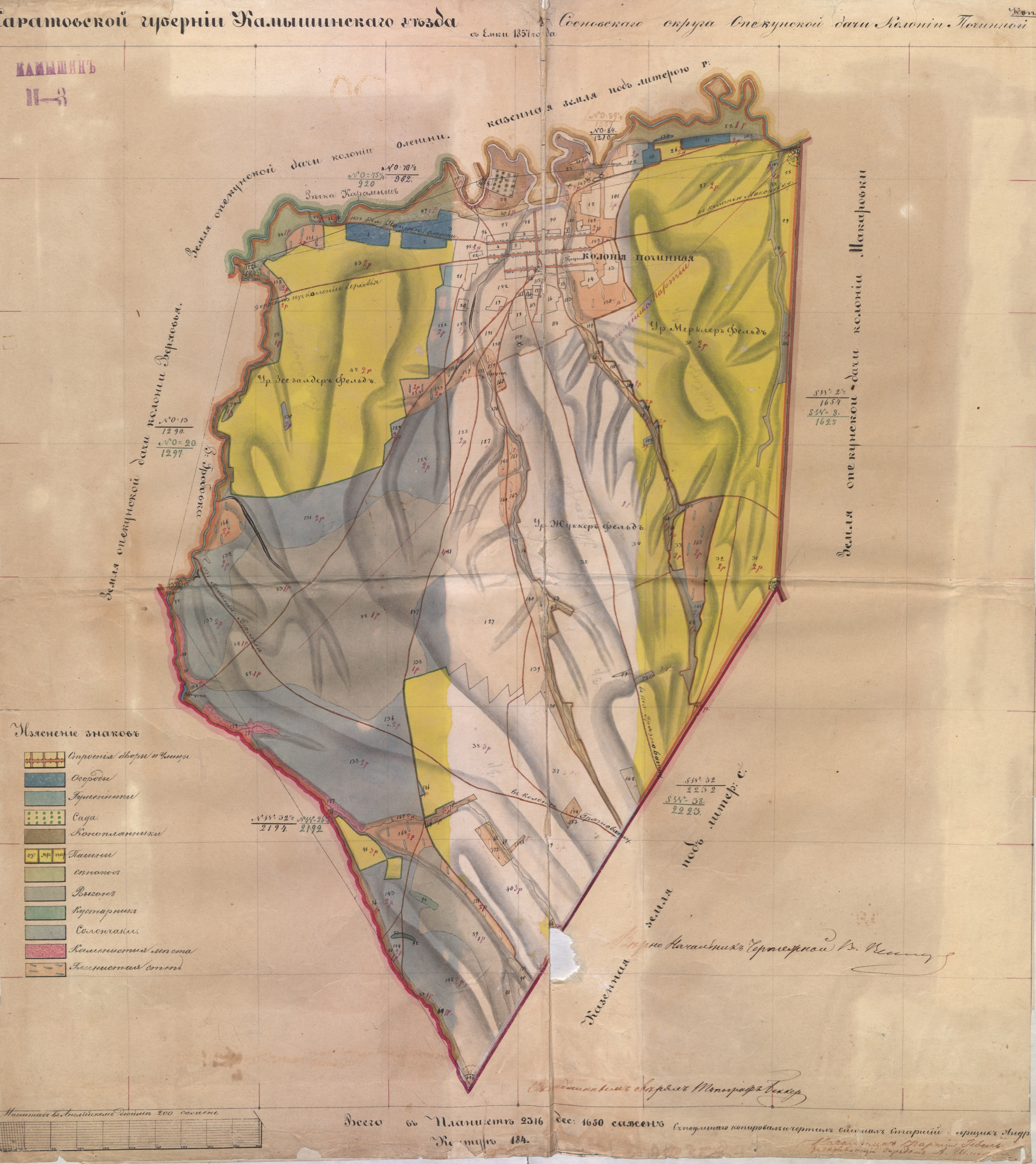
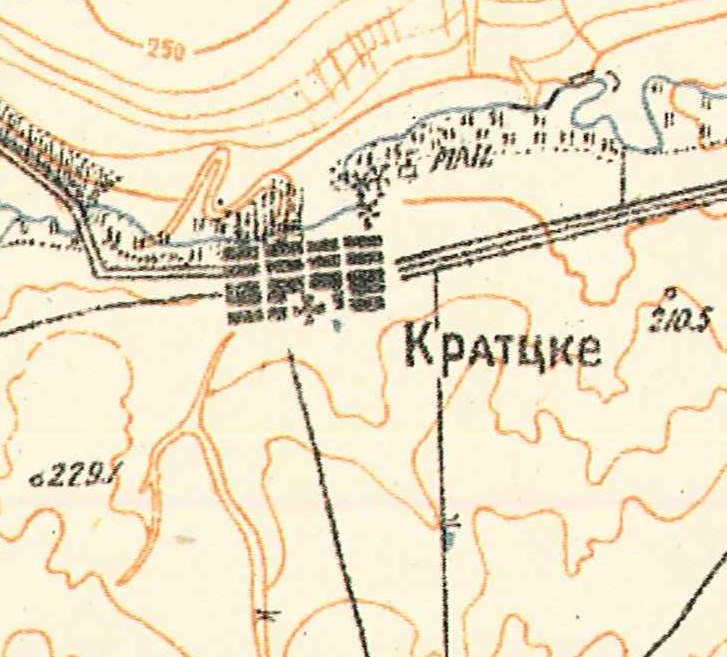
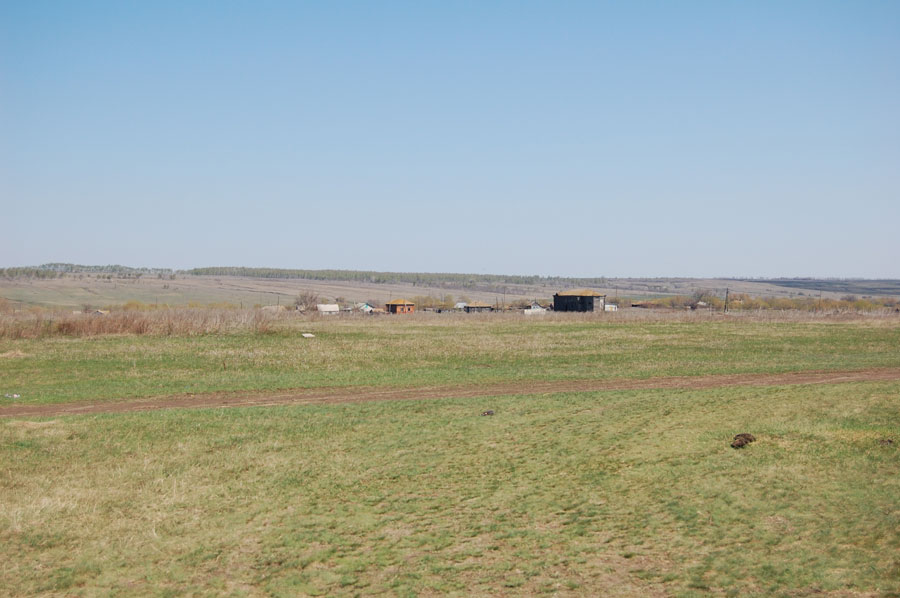
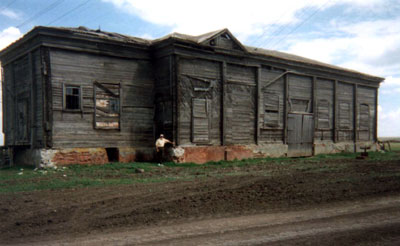
![Lutheran Church in Kratzke (2009). [opposite side] Source: Georgi Spach. Lutheran Church in Kratzke (2009). [opposite side] Source: Georgi Spach.](/sites/default/files/colony_images/kratzke_church_2009.jpg)
![Interior of the Lutheran Church in Kratzke (2009). [taken through a projector slot; floor removed; foundation exposed] Source: Georgi Spach. Interior of the Lutheran Church in Kratzke (2009). [taken through a projector slot; floor removed; foundation exposed] Source: Georgi Spach.](/sites/default/files/colony_images/kratzke_church_interior_2009.jpg)
